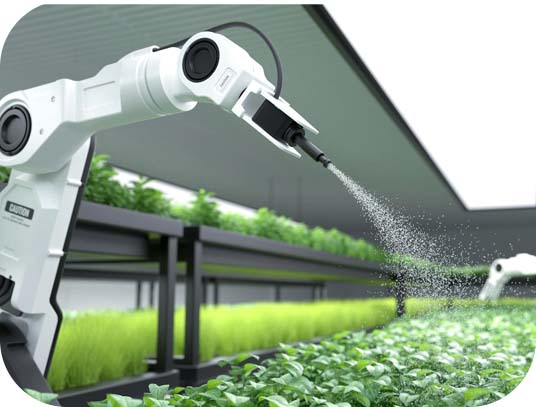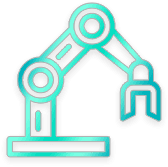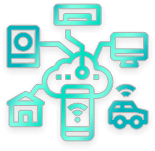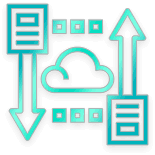The reason for presenting this idea is actually the future research of saffron farms and the implementation of an operational example of using modern technologies in saffron farms.
Internet of things, robots and digital systems have been used in these farms.


Sensors play a very important role in collecting information from agricultural land; Information used by many other technologies for analysis and decision making. For example, sensors that have the exact number of products harvested and available in the warehouse. Also, the sensors that are placed inside the soil and constantly check the amount of water and nutrients in the soil and report to the farmer.

Drones that map agricultural land and provide aerial images of the status of planted crops.

Machines that are designed for specific purposes and are fully automatic and are used for planting and harvesting crops.

Soil and air sensors installed in fields and connected to mobile devices can make the necessary decisions in fields such as irrigation to reach a certain level of humidity, effective use of fertilizers and chemical pesticides in an intelligent manner and based on the available information. This helps to reduce the losses caused by human errors.

With sensors, robots, drones and satellites and other connected devices in the field, the volume of information being generated and exchanged is enormous. This high volume of information has determined the need for big data technology.

Due to the large amount of data in smart agriculture, analytical systems can provide useful predictions in the growth and harvest stages of the crop. In addition, they can help to improve the quality and productivity of agricultural products by collecting environmental information and comprehensive information on pathogenic factors of agricultural products. Also, by analyzing market demand and production, these platforms help farmers estimate the best time to supply products to achieve more profit.

Considering the fact that a large part of farmers, both in developed and developing countries, do not benefit from agricultural knowledge and science and often act based on their experiences, the need to access information in different languages and with visual methods such as video and image become very important. Digital technology will help farmers remotely and with online learning in crop production and health.

Chatbots are conversational virtual assistants that communicate with the end user directly and automatically. Artificial intelligence with the help of machine learning technology and natural language processing has strengthened chatbots and is completely personalized to communicate with the user. Although chatbots are still in their infancy, the agricultural industry can also use this technology to answer questions, provide advice and solutions to those involved in the field.
Of course, it should be noted that the agricultural industry has traveled a long way to reach this stage, i.e., intelligent agriculture. Although agriculture has not yet become intelligent in a real and comprehensive sense, but due to technological advances, it is possible to predict what changes will be achieved in the intelligent model. If we consider the agricultural industry from the beginning of the emergence of very basic machines that were used in harvesting, we can show the process of digitalization and smartening of this industry in five general stages.